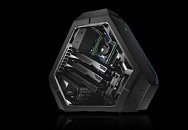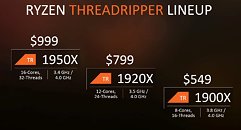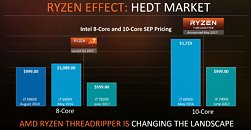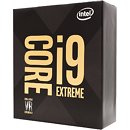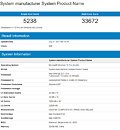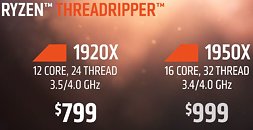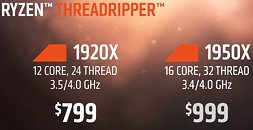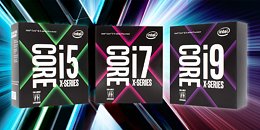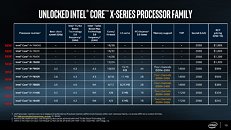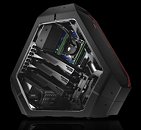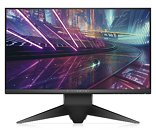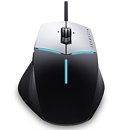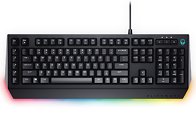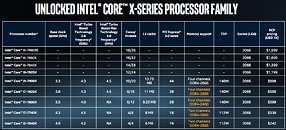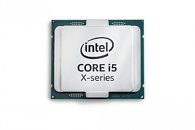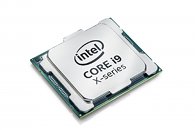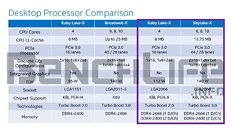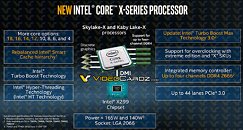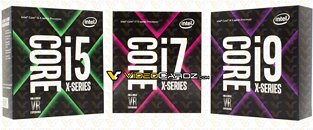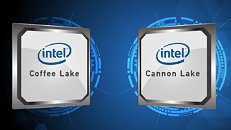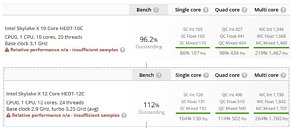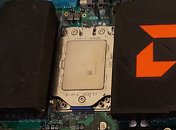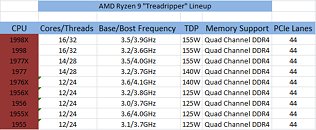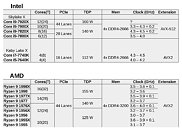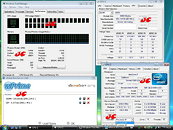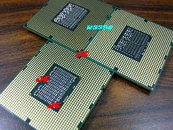
Alienware Announces the Area 51 X299 Configuration With Intel Core i9 Inside
Adding to Alienware's staple of custom-built PCs and their exclusivity deal with AMD to sell pre-built machines with Ryzen Threadripper 16-core CPUs, the company has just announced that their Area 51 desktop solution will now also be available with Intel's latest X299 HEDT platform. Intel Core X-series processors can be configured with a Core i7-7800X, i7-7820X, or i9-7900X processor, and liquid cooling comes standard with the system for these high-performance CPUs. Alienware even ships the Area 51 with an unlocked BIOS so that users can still tap all of the potential inside their new gaming rig.
Kingston's HyperX 2933 MHz memory comes standard (up to 64 GB in 4x 16 GB configuration), and the graphics processing can be configured with either AMD (RX 560, 570, and 580) or NVIDIA cards (GTX 1050 Ti, GTX 1060 (6GB), GTX 1070, GTX 1080 or GTX 1080 Ti.) The absence of AMD's Vega graphics cards should come as a surprise for red-team fans. There are also dual and triple-GPU configurations available, though with the slow, choking death of multi-GPU support, that might not be the best inroad for a high performance computer. A 2 TB HDD takes care of storage, and SSD goodness can come in 256, 512 GB, or 1 TB in the M.2 form-factor. There's Intel Optane support (in 16 GB or 32 GB), and the power supply can range from an 850 W unit up to a 1500 W one. There is a total of 8x USB 3.0 ports (2x front, 6x rear) and 2x USB 3.1 Gen 2 ports (1x Type-A, 1x Type-C). Dual gigabit LAN is provided by a Qualcomm Killer E2500 NIC, while wireless connectivity is available in the form of Killer 1535 or Dell 1820 802.11ac WiFi.
Kingston's HyperX 2933 MHz memory comes standard (up to 64 GB in 4x 16 GB configuration), and the graphics processing can be configured with either AMD (RX 560, 570, and 580) or NVIDIA cards (GTX 1050 Ti, GTX 1060 (6GB), GTX 1070, GTX 1080 or GTX 1080 Ti.) The absence of AMD's Vega graphics cards should come as a surprise for red-team fans. There are also dual and triple-GPU configurations available, though with the slow, choking death of multi-GPU support, that might not be the best inroad for a high performance computer. A 2 TB HDD takes care of storage, and SSD goodness can come in 256, 512 GB, or 1 TB in the M.2 form-factor. There's Intel Optane support (in 16 GB or 32 GB), and the power supply can range from an 850 W unit up to a 1500 W one. There is a total of 8x USB 3.0 ports (2x front, 6x rear) and 2x USB 3.1 Gen 2 ports (1x Type-A, 1x Type-C). Dual gigabit LAN is provided by a Qualcomm Killer E2500 NIC, while wireless connectivity is available in the form of Killer 1535 or Dell 1820 802.11ac WiFi.
